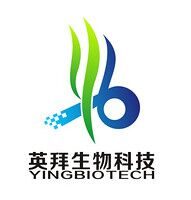癌癥藥物靶向ChIP PCR芯片 Cancer Drug Targets ChIP PCR Array

癌癥藥物靶向ChIP PCR芯片 Cancer Drug Targets ChIP PCR Array
Cancer Drug Targets ChIP PCR Array
運(yùn)費(fèi) ¥0.00
| 地區(qū): | 上海 |
| 簡(jiǎn)介: | Cancer Drug Targets ChIP PCR Array |
| 提供商: | SAB |
| 服務(wù)名稱: | Cancer Drug Targets ChIP PCR Array |
PI-3 Kinases & Phosphatases: FRAP1 (MTOR), PIK3C2A, PIK3C3, PIK3CA. Growth Factors & Receptors: EGFR, ERBB2, ERBB3, ERBB4, FIGF, FLT1, FLT4, IGF1, IGF1R, IGF2, KDR, KIT, PDGFRA, PDGFRB. Drug Metabolism: ABCC1, GSTP1, PTGS2, TXN, TXNRD1. G Protein Signaling: RHOA, RHOB. Hormone Receptors: ESR1, ESR2, PGR. Heat Shock Proteins: HSP90AA1, HSP90B1. Receptor Tyrosine Kinase Signaling: AKT1, AKT2, GRB2. Cathepsins: CTSB, CTSD, CTSL1, CTSS. Cell Cycle: CDC2, CDC25A, CDK2, CDK4, CDK5, CDK7, CDK8, CDK9, MDM2, MDM4, TERT. Topoisomerases, Type II: TOP2A, TOP2B. Transcription Factors: ATF2, HIF1A, IRF5, NFKB1, TP53. Protein Kinases: AURKA, AURKB, AURKC, PLK1, PLK2, PLK3, PLK4, PRKCA, PRKCB, PRKCD, PRKCE. RAS Signaling: HRAS, KRAS, NRAS. Histone Deacetylases: HDAC1, HDAC11, HDAC2, HDAC3, HDAC4, HDAC6, HDAC7, HDAC8. Poly ADP-Ribose Polymerases: PARP1, PARP2, PARP4, TNKS. Structural Protein: NTN3. |








